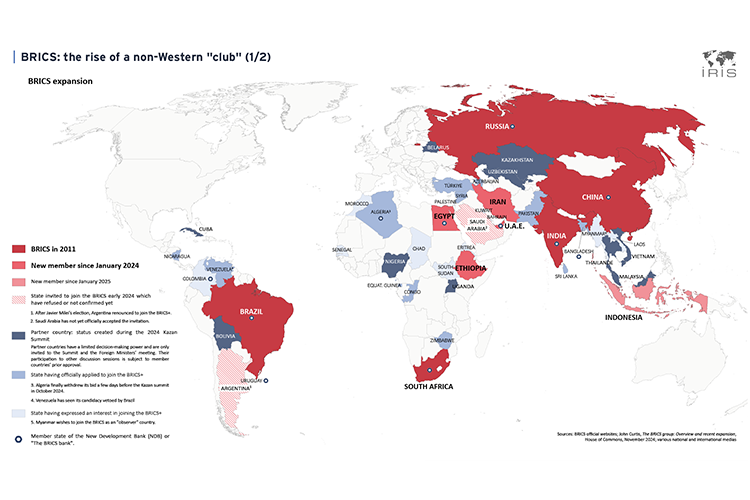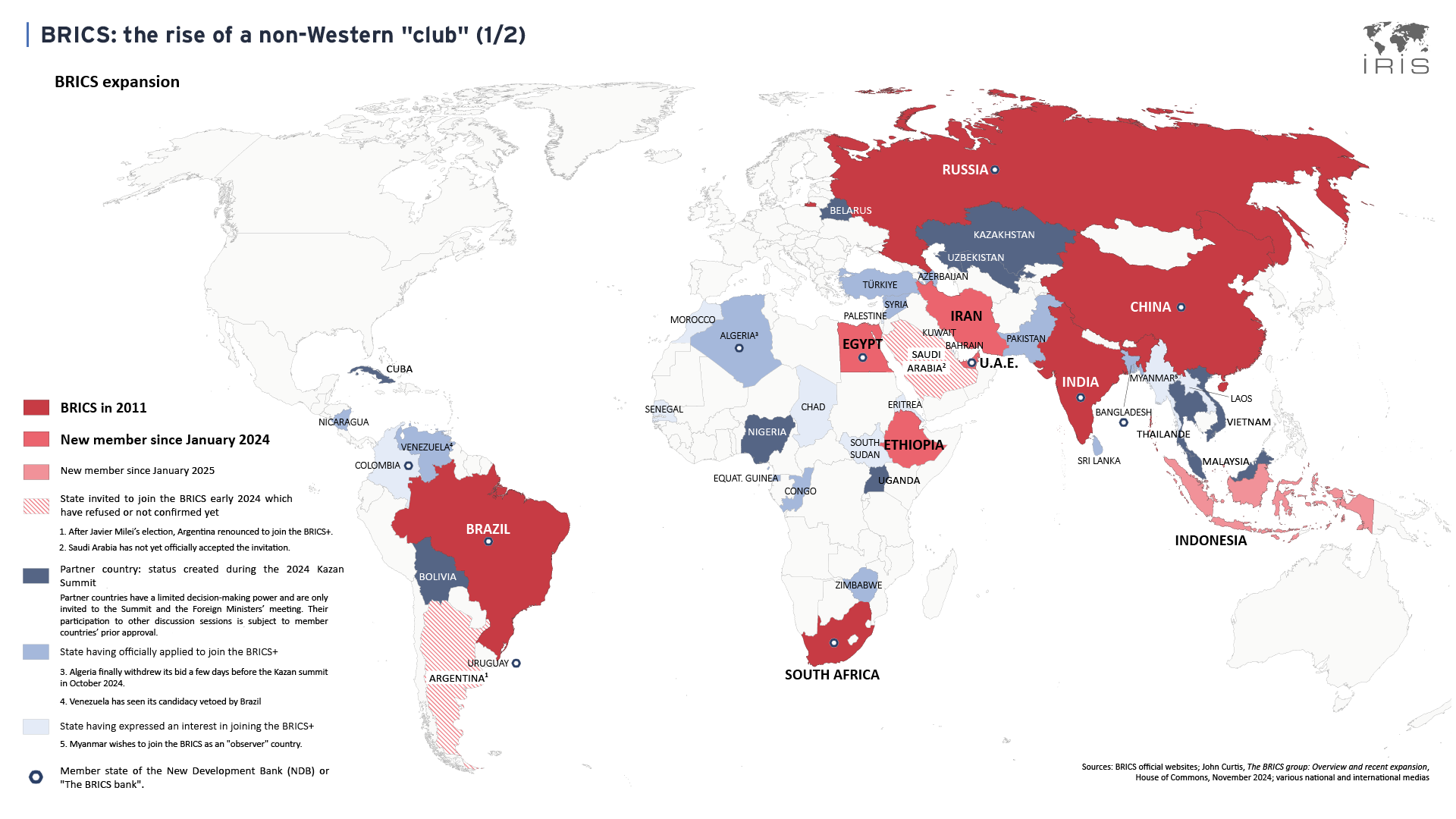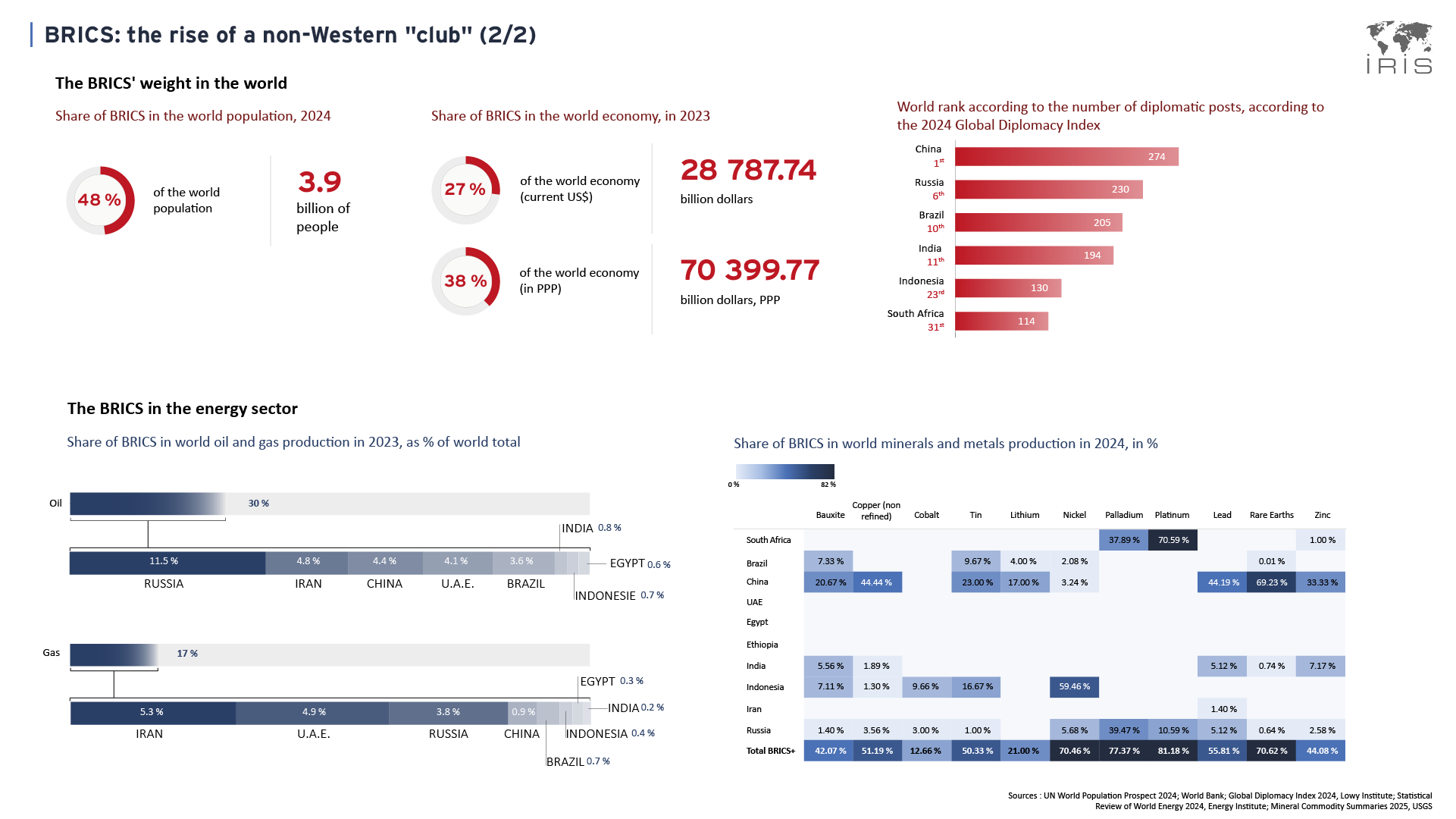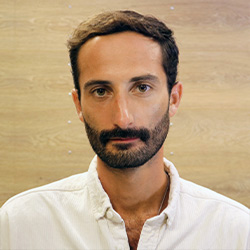Cartographies
3 July 2025
BRICS: the rise of a non-western “club”

On Sunday 6 July 2025, the annual BRICS summit will open in Rio de Janeiro, Brazil, bringing together the leaders of the now ten member states.
Founded in 2009 around Brazil, India, Russia and China, joined in 2011 by South Africa, this “club” was intended to bring together the main emerging powers to position itself as an alternative to other international organisations and groups marked by the imprint of Western powers, first and foremost the G7.
Without constituting either an alliance or a homogeneous bloc with unified positions – as the wars in Ukraine and Gaza testify – the BRICS are expanding beyond contradictions and disagreements, with a view to challenging Western predominance in the international order. In January 2024, they underwent their first expansion with the inclusion of Iran, the United Arab Emirates, Egypt and Ethiopia. This expansion illustrates the economic developments underway on the African continent and the growing power of the Gulf States. Indonesia join the group in January 2025.
These enlargements strengthen the weight of the BRICS. They now account for almost half the world’s population and more than a quarter of global GDP (in current dollars). On the energy scene too, their combined capacities make them key players in the oil and gas and minerals production sectors.
What’s more, the BRICS are a force to be reckoned with in the countries of the South. In response to numerous requests, the status of “partner” state was created at the Kazan summit in Russia in November 2024. However, these developments could lead to dilution and further divisions. Some of the founding members, such as India and Brazil, remain reluctant to enlarge the circle, fearing a loss of influence. Especially as China’s influence continues to grow.



